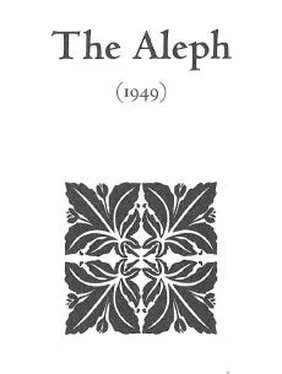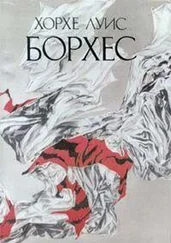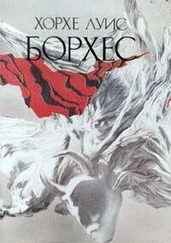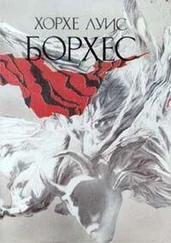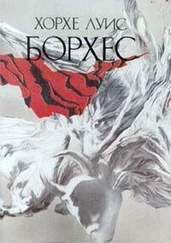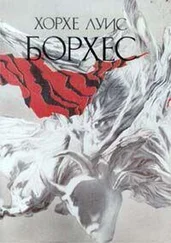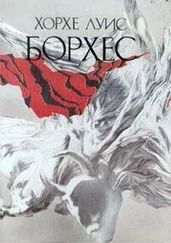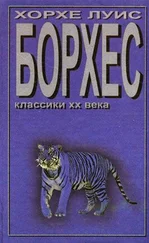Хорхе Борхес - Collected Fictions
Здесь есть возможность читать онлайн «Хорхе Борхес - Collected Fictions» весь текст электронной книги совершенно бесплатно (целиком полную версию без сокращений). В некоторых случаях можно слушать аудио, скачать через торрент в формате fb2 и присутствует краткое содержание. Год выпуска: 1999, ISBN: 1999, Издательство: Penguin (UK), Жанр: Старинная литература, на английском языке. Описание произведения, (предисловие) а так же отзывы посетителей доступны на портале библиотеки ЛибКат.
- Название:Collected Fictions
- Автор:
- Издательство:Penguin (UK)
- Жанр:
- Год:1999
- ISBN:9780140286809
- Рейтинг книги:5 / 5. Голосов: 1
-
Избранное:Добавить в избранное
- Отзывы:
-
Ваша оценка:
- 100
- 1
- 2
- 3
- 4
- 5
Collected Fictions: краткое содержание, описание и аннотация
Предлагаем к чтению аннотацию, описание, краткое содержание или предисловие (зависит от того, что написал сам автор книги «Collected Fictions»). Если вы не нашли необходимую информацию о книге — напишите в комментариях, мы постараемся отыскать её.
Collected Fictions — читать онлайн бесплатно полную книгу (весь текст) целиком
Ниже представлен текст книги, разбитый по страницам. Система сохранения места последней прочитанной страницы, позволяет с удобством читать онлайн бесплатно книгу «Collected Fictions», без необходимости каждый раз заново искать на чём Вы остановились. Поставьте закладку, и сможете в любой момент перейти на страницу, на которой закончили чтение.
Интервал:
Закладка:
Monk Eastman, Purveyor of Iniquities
THE TOUGHS OF ONE AMERICA
Whether profiled against a backdrop of blue-painted walls or of the sky itself, two toughs sheathed in grave black clothing dance, in boots with high-stacked heels, a solemn dance—the tango of evenly matched knives—until suddenly, a carnation drops from behind an ear, for a knife has plunged into a man, whose horizontal dying brings the dance without music to its end. Resigned,* the other man adjusts his hat and devotes the years of his old age to telling the story of that clean-fought duel. That, to the least and last detail, is the story of the Argentine underworld. The story of the thugs and ruffians of New York has much more speed, and much less grace.
THE TOUGHS OF ANOTHER
The story of the New York gangs (told in 1928 by Herbert Asbury in a decorous volume of some four hundred octavo pages) possesses all the confusion and cruelty of barbarian cosmologies, and much of their gigantism and ineptitude. The chaotic story takes place in the cellars of old breweries turned into Negro tenements, in a seedy, three-story New York City filled with gangs of thugs like the Swamp Angels, who would swarm out of labyrinthine sewers on marauding expeditions; gangs of cutthroats like the Daybreak Boys, who recruited precocious murderers often and eleven years old; brazen, solitary giants like the Plug Uglies, whose stiff bowler hats stuffed with wool and whose vast shirttails blowing in the wind of the slums might provoke a passerby's improbable smile, but who carried huge bludgeons in their right hands and long, narrow pistols; and gangs of street-toughs like the Dead Rabbit gang, who entered into battle under the banner of their mascot impaled upon a pike. Its characters were men like Dandy Johnny Dolan, famed for his brilliantined forelock, the monkey-headed walking sticks he carried, and the delicate copper pick he wore on his thumb to gouge out his enemies' eyes; men like Kit Burns, who was known to bite the head off live rats; and men like blind Danny Lyons, a towheaded kid with huge dead eyes who pimped for three whores that proudly walked the streets for him. There were rows of red-light houses, such as those run by the seven New England sisters that gave all the profits from their Christ-mas Eves to charity; rat fights and dog fights; Chinese gambling dens; women like the oft-widowed Red Norah, who was squired about and loved by every leader of the famous Gophers, or Lizzy the Dove, who put on black when Danny Lyons was murdered and got her throat cut for it by Gentle Maggie, who took exception to Lizzy's old affair with the dead blind man; riots such as that of the savage week of 1863 when a hundred buildings were burned to the ground and the entire city was lucky to escape the flames; street brawls when a man would be as lost as if he'd drowned, for he'd be stomped to death; and thieves and horse poisoners like Yoske Nigger. The most famous hero of the story of the New York City underworld is Edward Delaney, alias William Delaney, alias Joseph Marvin, alias Joseph Morris— alias Monk Eastman, the leader of a gang of twelve hundred men.
THE HERO
Those shifting "dodges" (as tedious as a game of masks in which one can never be certain who is who) fail to include the man's true name—if we allow ourselves to believe that there is such a thing as "a man's true name." The fact is, the name given in the Records Division of the Williamsburg section of Brooklyn is Edward Ostermann, later Americanized to Eastman. Odd—this brawling and tempestuous hoodlum was Jewish. He was the son of the owner of a restaurant that billed itself as kosher, where men with rabbinical beards might trustingly consume the bled and thrice-clean meat of calves whose throats had been slit with righteousness. With his father's backing, in 1892, at the age of nineteen, he opened a pet shop specializing in birds. Observing the life of animals, studying their small decisions, their inscrutable innocence, was a passion that accompanied Monk Eastman to the end. In later times of magnificence, when he scorned the cigars of the freckled sachems of Tammany Hall and pulled up to the finest whorehouses in one of New York's first automobiles (a machine that looked like the by-blow of a Venetian gondola), he opened a second establishment, this one a front, that was home to a hundred purebred cats and more than four hundred pigeons—none of which were for sale at any price. He loved every one of the creatures, and would often stroll through the streets of the neighborhood with one purring cat on his arm and others trailing along ambitiously in his wake.
He was a battered and monumental man. He had a short, bull neck, an unassailable chest, the long arms of a boxer, a broken nose; his face, though legended with scars, was less imposing than his body. He was bowlegged, like a jockey or a sailor. He might go shirtless or collarless, and often went without a coat, but he was never seen without a narrow-brimmed derby atop his enormous head. He is still remembered. Physically, the conventional gunman of the moving pictures is modeled after him, not the flabby and epicene Capone. It has been said that Louis Wolheim was used in Hollywood films because his features reminded people of the deplorable Monk Eastman.... Eastman would leave his house to inspect his gangster empire with a blue-feathered pigeon perched on his shoulder, like a bull with a heron on its hump.
In 1894 there were many dance halls in New York City; Eastman was a bouncer in one of them. Legend has it that the manager wouldn't talk to him about the job, so Monk showed his qualifications by roundly demolishing the two gorillas that stood in the way of his employment. He held the job until 1899—feared, and single-handed.
For every obstreperous customer he subdued, he would cut a notch in the bludgeon he carried. One night, a shining bald spot leaning over a beer caught his eye, and Eastman laid the man's scalp open with a tremendous blow. "I had forty-nine nicks in me stick, an' I wanted to make it an even fifty!" Eastman later explained.
RULING THE ROOST
From 1899 onward, Eastman was not just famous, he was the ward boss of an important electoral district in the city, and he collected large payoffs from the red-light houses, stuss games, streetwalkers, pickpockets, loft burglars, and footpads of that sordid fiefdom. The Party would contract him when some mischief needed doing, and private individuals would come to him too. These are the fees he would charge for a job:
Ear chawed off....................................................................$ 15.
Leg broke...............................................................................19.
Shot in leg..............................................................................25.
Stab........................................................................................25.
Doing the big job....................................................…..........100. and up.
Sometimes, to keep his hand in, Eastman would do the job personally.
A territorial dispute as subtle and ill humored as those forestalled by international law brought him up against Paul Kelly, the famous leader of another gang. The boundary line had been established by bullets and border patrol skirmishes. Eastman crossed the line late one night and was set upon by five of Kelly's men. With his blackjack and those lightning-quick simian arms of his, he managed to knock down three of them, but he was shot twice in the stomach and left for dead. He stuck his thumb and fore-finger in the hot wounds and staggered to the hospital. Life, high fever, and death contended over Monk Eastman for several weeks, but his lips would not divulge the names of his assailants. By the time he left the hospital, the war was in full swing. There was one shoot-out after another, and this went on for two years, until the 19th of August, 1903.
Читать дальшеИнтервал:
Закладка:
Похожие книги на «Collected Fictions»
Представляем Вашему вниманию похожие книги на «Collected Fictions» списком для выбора. Мы отобрали схожую по названию и смыслу литературу в надежде предоставить читателям больше вариантов отыскать новые, интересные, ещё непрочитанные произведения.
Обсуждение, отзывы о книге «Collected Fictions» и просто собственные мнения читателей. Оставьте ваши комментарии, напишите, что Вы думаете о произведении, его смысле или главных героях. Укажите что конкретно понравилось, а что нет, и почему Вы так считаете.
